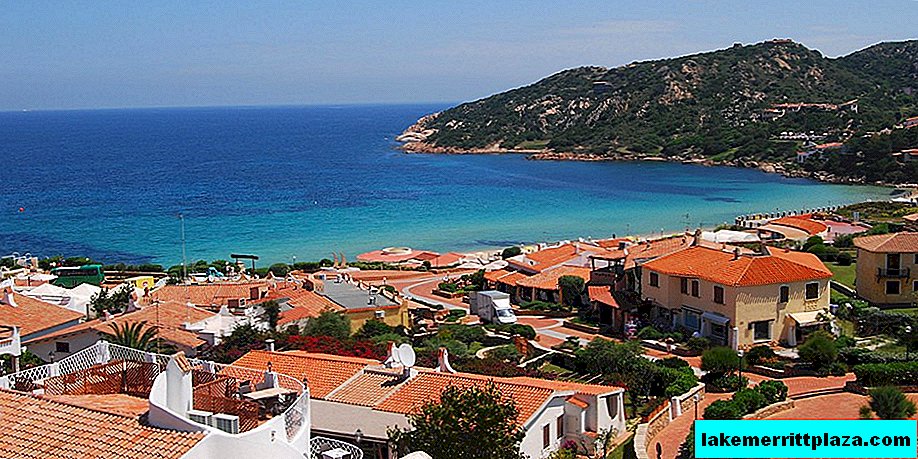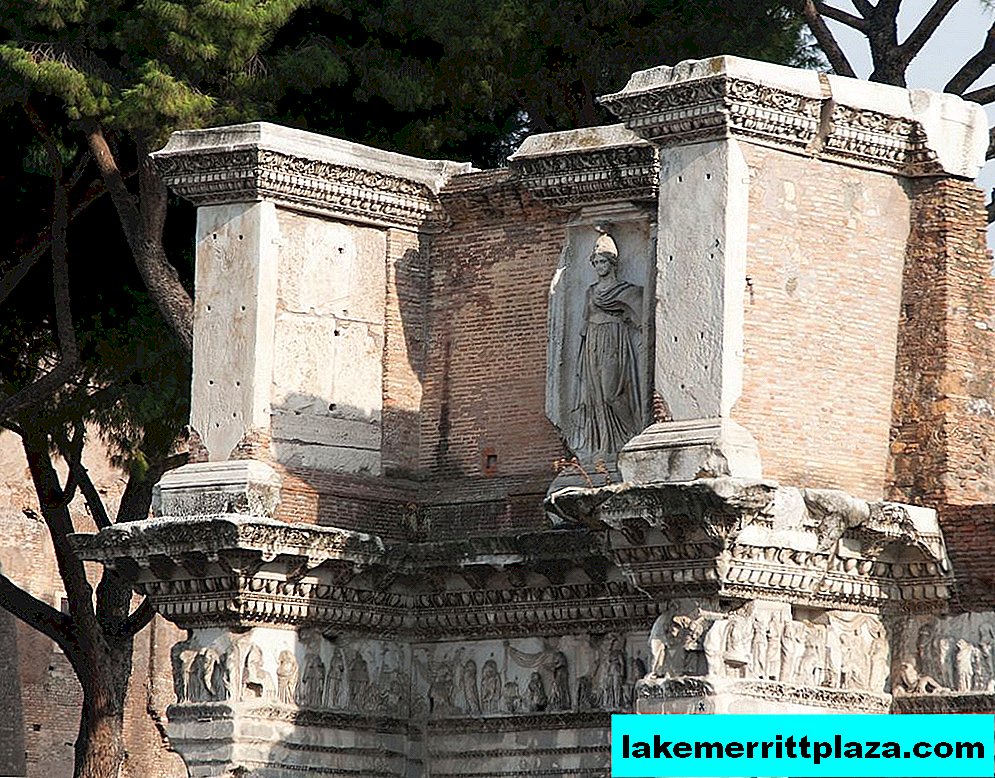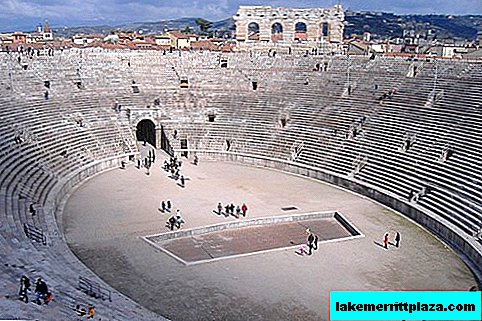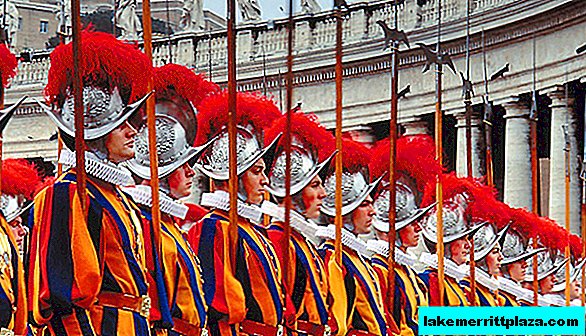Sassari (Sassari) - a city in Italy, in the island of Sardinia (Sardegna), the second largest in the province of the same name. The resort town is located on a plateau of limestone rocks, where picturesque valleys alternate with wild gorges. The surrounding area is famous for its sources of pure natural water. Artesian wells provide moisture to fields with vegetable crops, orchards, vineyards, olive groves.

The resort is located 12 kilometers from the Coral coast (Coral coast) with beautiful golden sandy beaches. The city is surrounded by garden and park greenery: the reconstructed old Montserrat park (Parco di Monserrato), Bunnari park (Parco di Bunnari) with attractions and entertainment, etc.
- Recommended article: the best beaches of Sardinia
Story
The most ancient evidence of a person's stay on the land of Sassari dates back to the 4th-3rd millennium BC. (burial grounds of Domus de Janus, Domus de Janas). Thanks to the findings of archaeologists, it is known that constantly people settled here from the 17th century BC. e.
In the heyday of ancient Rome, here, near the large city of Turris Libyssonis (the modern name of Porto Torres, Porto Torres), there were small rural settlements. This is evidenced by such finds as pottery, old money, burial places. Also in this area are the remains of an ancient road between Turris and Caralis (the modern name is Cagliar, Cagliar), Roman villas, aqueducts, agricultural buildings and places of extraction of building stone.
The appearance of the settlement under the modern name dates back to 1131, this is evidenced by the records in the documents stored in the monastery of St. Peter (il monastero di San Pietro) in the city of Silki.
The entire territory of Sardinia during the early Middle Ages was divided into hereditary feudal possessions - judicates. Sassari was part of the Logudoro (Torres, Torres) jurisdiction.
Since the XIII century, the city has been growing, since merchants from Genoa and Pisa, who traded with Sardinian agricultural producers, began to settle in it.
Gradually, an internecine war broke out between Pisa and Genoa for influence on a rich province. The jurisdiction of Torres, whose capital was Sassari, weakened and in 1259 split into smaller possessions.
After the dissolution of the judiciary, the former capital was proclaimed a republic by the inhabitants and acquired the status of a free commune. About 10 thousand people lived in the commune; it entered into an alliance with Pisa and Genoa. The commune had its own ruler - podest, its own code of laws in Latin and Sardinian, the city was surrounded by fortifications with 36 powerful towers.
Since 1297, by decision of Pope Boniface VIII (Papa Bonifacio), the Kingdom of Sardinia and Corsica (Il regno di Sardegna e Corsica) was formed, in 1323 the war of the new Kingdom with the Leaning Republic of Pisa begins. Sassari in this war takes the side of the Kingdom of Sardinia and Corsica and is part of it.
The territory of the former commune was enlarged due to the defeated Pisa Republic. In 1330, a fortress was built in the city, and he began to submit directly to the king of the new kingdom (Kingdom of Aragon, Il regno di Aragona), local self-government appeared, a place in parliament.
From 1343 to 1420, the province was almost constantly covered by internecine wars and plague epidemics.
Since 1420, it again became the capital of the north of Sardinia, crafts, trade developed rapidly, the first monastery schools opened, painters and craftsmen came to the city. Since 1479, Sardinia has been part of Spain, and Spanish is becoming the official language. In 1562, a Jesuit school was opened by the city authorities, which since 1617 became a university. In 1616, a printing house appeared. Since 1535, the Council of the Spanish Inquisition has been sitting in the city.
Since 1714, Sardinia has been part of Austria in accordance with the Utrecht Treaty, and since 1720 it has become the property of the Royal House of Savoy (Residenze sabaude di Torino e dintorni), therefore Italian becomes the state language and the language of education and culture.
Residents were unhappy with their dependence on foreign rulers, in 1780 there was an uprising against the royal power, in 1795 another, but both were suppressed.
The next period of economic growth is the XIX century.
In 1861, after the formation of the Kingdom of Italy (Regno D'Italia), a central square and a palace appeared in Sassari, and the fortress built by the Spaniards was destroyed. A railway line runs to the city.
Residents of the ancient city became famous as heroic participants in the First World War. During World War II, the city was practically unharmed; it received emigrants from Italy and other states.
Sights
Sassari is a multifaceted tourism center that attracts with its cultural monuments and architectural sights of different periods of creation.
Domus de Janas

Domus de Janas (Fairy House) is an ancient burial place in the suburban village of Le Punti, located in rock niches dating back to 4-3 thousand BC.
Sardinian ziggurat in Monte d'Accody

Sardinian ziggurat (Altare preistorico di Monte d'Accoddi), located at a distance of 11 kilometers from the city limits, is a famous temple, the construction time of which dates back to 3-2 thousand BC. e., that is, the Neolithic. By its architecture, the Sardinian ziggurat corresponds to all the features of Mesopotamian similar buildings.
This building is the only one of its kind on European territory, representing the cultural traditions of Ocieri.
Ziggurat was damaged during World War II. In 1954, nearby were found dwellings of the Neolithic, burial, stone altars for sacrifices. Since the 80s of the XX century, restoration work has been carried out.
Nuragi

The resort city and its suburbs are the location of megaliths in the form of cone-shaped towers made of stones stacked on top of each other. Such megaliths are called Nuraghi, they were created from the 2nd millennium BC. e. until 238 BC, when Sardinia was conquered by the troops of Ancient Rome.
Like many similar megalithic structures, the nuragi keep the secret of their mission: scientists cannot determine exactly what they were used for. The most popular versions are a temple, a fortification, a house, or a combination of these 3 functions. Nuragas are most often located in elevated places with good visibility, so the main version is fortification.
Each has a name: Nuragi Attentu, della Scala, Piandanna, etc.
Fortress walls
On the site of medieval buildings, the remains of fortified city walls and 6 towers (of 36 that existed previously) have been preserved. The most significant of these is the Turondola tower (torre di Turondola) near University Square (Piazza dell'università).
In addition to the remains of city walls, you can see the foundations and the underground part of the Spanish fortress of the XIV century. Now the remains of the fortress are being restored.
Cathedral of St. Nicholas the Wonderworker

Nikolai the Miracle Worker is the patron saint of the city. The cathedral (Cattedrale di San Nicola, Duomo) was built in the XII century, then it was completed and reconstructed until the XVII century. The temple is located in Cathedral Square (piazza del Duomo), characterized by amazing architecture in the spirit of the buildings of the East. Baroque features, sculptures of revered great martyrs, a facade with three levels of original decor adorn the cathedral.
Church of virgin mary

The Church of Our Lady of Bethlehem (Chiesa di Santa Maria di Betlem), is dedicated to the defender of the city. The construction of this shrine began in the XII century, combines the features of the Romanesque style, Gothic and signs of oriental architecture. The interior is also eclectic: Gothic and Baroque. create a unique color of interiors. The church is located on St. Mary's Square, adjacent to it is the monastery building of the Franciscans.
Museum of the history of the motorized rifle brigade "Sassari"
The soldiers who served in the brigade showed heroism in battles with the Austrian army on the fields of the First World War. The museum presents relics belonging to this period. The museum is part of the modern army barracks complex on Fortress Square (Piazza Castello). You can visit the museum for free, but only at certain hours: 9.00-12.30, 14.30-16.30 on weekdays and 9.00-12.30 on Saturdays.
National Museum of Sanna

The Giovanni Antonio Sanna Museum (Museo Nazionale "Giovanni Antonio Sanna") is known worldwide as a museum of archeology, representing a rich collection of treasures from the Bronze Age period. The museum also has an art gallery and a department of arts and crafts.
- Museum Address: Via Roma, 64. Opening hours: 9.00-20.00 daily, except Mondays.
- Ticket price: 4 euro.
- Official site: www.museosannasassari.beniculturali.it
Fountain di Rosello

The fountain (Fontana di Rosello) on Trinity Avenue (Corso Trinità), just north of the city center, is an urban symbol that in the old days supplied fresh clean water to the entire central area of the city. Allegorical images of the seasons and 12 open mouths adorn the fountain, denoting months. Such a composition recalls the transience of time.
There are 2 arches above the fountain, intersecting and supporting the sculptural image of St. Gavino on a horse.
Palaces today
Uzini Palace
Uzini Palace (Palazzo d'Usini) is located in Piazza Tola, where during the years of the Spanish Inquisition, executions of apostates accused of heresy were carried out at the stake. Noble people admired the execution from the windows of this palace, which is now the library building.
House of King Enzo
House of King Enzo (Casa di Re Enzo) on the avenue Vittorio Emanuele II (Corso Vittorio Emanuele II) - The building of the XV century in the Gothic style. There is a shop in the royal house, and arches, chandeliers, preserved ceiling and wall murals remind of the Middle Ages.
Provincial Palace

The 19th-century Provincial Palace (Palazzo della Provincia), otherwise called the Palazzo Sciuti, is now the province’s City Hall.
Giordano palace
Giordano's Palace (Palazzo Giordano) of the 19th century on the Square of Italy (Piazza Italia), different combination of Venetian style and neo-Gothic, rich decoration, and is used as a management of the Bank of Sardinia.
Ducal palace
The Ducal Palace (Palazzo Ducale) of the 18th century was the city hall in which the municipality met, and now it houses a collection of paintings.
University

University of Sassari (Università degli Studi di Sassari) is the oldest in Sardinia and the best in the ranking of universities in Italy in terms of the quality of education. There are 11 faculties at the university, one of them is internationally known for its research activities in the field of ecology of the Mediterranean Sea (Mediterraneo).
In the library storage facilities of the university, ancient medieval documents and legislative acts of different centuries are preserved.
Hotels
The hospitable resort town of Sassari offers more than 59 accommodation options of a high level of comfort at affordable prices. We have selected for you the best reviews from tourists.

3 stars
3 star hotels, located in the historical district and in the new quarters of the city, invite you to comfortable rooms at affordable prices.
Hotel Vittorio Emanuele

Hotel Vittorio Emanuele is located in a historic building recently renovated with outstanding architecture from the early 20th century. It has a high level of soundproofing rooms, comfortable furniture.
The hotel has facilities for guests with disabilities, as well as for guests with pets.
Within walking distance are the Ethnographic and Archaeological Museum, theaters, shops, restaurants.
Hotel il Vialetto

Hotel Il Vialetto, located in the area of new buildings, close to the train and bus station, attracts guests with modern conference rooms and forums, for celebrations with a large number of guests. Spacious rooms provide opportunities for sleep and relaxation, invite to play bingo and bet on the sweepstakes, and the restaurant serves delicacies of the national cuisine of Sardinia.
4 stars
4 star hotels are located in the historic city quarter and feature modern, stylish decoration.
Hotel grazia deledda

Hotel Grazia Deledda is a 10-minute walk from Plaza de Italy. The rooms will delight lovers of classics and retro in interior design. Visitors are provided with all necessary household appliances, cosmetics. The restaurant serves national Sardinian dishes and traditional continental breakfasts.
The hotel welcomes tourists with special health needs and holidaymakers with pets.
Hotel marini

Hotel Marini, hidden among a park in the city center, attracts tourists with the comfort of living in rooms with modern furniture and appliances, continental and national cuisine, the possibility of organizing events in the conference room.
The hotel welcomes guests with disabilities and guests with pets.
Apartments and B&B
Apartments and bed and breakfast accommodation are economical and ideal for families with children.
B&B Il Pavone

Surrounded by a green garden, Il Pavone Hotel is 2 km from the central areas and offers cool rooms with home appliances. Breakfast in fine weather is set amidst the greenery of the garden.
Dei mille

Hotel Dei Mille, built 700 meters from the Ducal Palace, offers beautiful rooms with balconies, a TV and other appliances.
The hotel invites guests to drink coffee made in the latest machine from capsules. The hotel accepts pets.
How to get there
From mainland Italy, Sassari can be reached from Livorno:
- from Livorno to the city of Olbia you can take a comfortable ferry (6.5-8 hours of travel, information on flights and tickets on the website: www.directferries.ru);
- A train runs from Olbia to Sassari, a ticket costs 8.90 euros, travel time 1 hour 44 minutes, three departures per day). We look at the schedule here.
The second option is to fly by plane from Livorno, Pisa, Florence, Genoa to the airport in Olbia or Cagliari, and from there transfer by train or bus, and ideally by a rented car, which can be rented on the website auto.italy4.me in just 13- 20 euros per day.

You can fly to Sardinia by direct flight from Moscow:
- In low season - flight to Olbia or Cagliari with a change in Rome at Fiumicino Airport;
- In the summer, you can buy tickets from Moscow for direct flights to Olbia or Cagliari.








